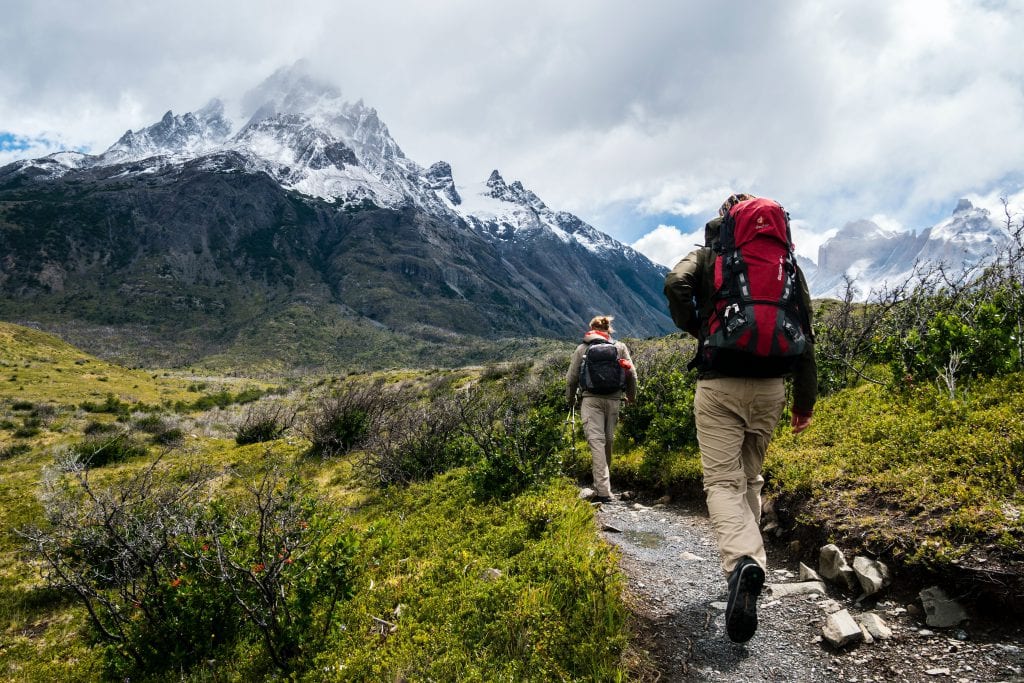
One of the best ways to have a little adventure out in nature is to go hiking. Whether you’re alone or with a group, going on a hike is a great way to get some fresh air and get the blood pumping.
However, it’s not that easy to go from being deskbound all the time to going uphill on a steep trek. So, if you’re a complete beginner to hiking, or an old hand who has fallen out of practice, you can use the following to get back into shape and get hike-ready.
Hikes can vary in intensity, depending on what terrain you’re going to be covering. But in all situations, you will have to walk extensively, over irregular and sometimes inclined stretches, and carry heavy backpacks while you do it. For this, training for hiking consists of strengthening what you need for these:
- Stamina, through Cardio.
- Endurance, for lifting.
- Fortitude, for getting through challenging situations.
Tip #1: Building Stamina– Cardio
In order to build stamina, you have to ease regular sessions of cardiovascular exercise into your daily routine.
That may sound daunting, but you don’t have to hit the treadmill right away. Start by walking more, instead of taking the bus or driving. When walking, try to escalate to a brisk walk or power walking.
Once comfortable, intensify to jogging, cycling, and running. You can switch back and forth between low and high intensity cardio, and push yourself a little each time. The most important thing is that you build your stamina.
Alternatively, you can also do aerobic exercises. If you’re a beginner, start with mild to moderate intensity workouts with intensive stretching, pilates, cycling, etc. From there you can build to high intensity interval training exercises.
If you have any medical conditions, make sure you ask your doctor before taking on a heavy workout regime.
On average, you should get in at least 3-5 days of cardio/week, in sessions of 25-45 minutes each. You can reduce the frequency when you start incorporating weight training.
Tip #2: Building Endurance – Weight Training and Strength Training
Although it may seem irrelevant to hiking, strength training is an essential part of your prep. Strength training builds endurance and strengthens your major load-bearing muscle groups.
When you’re hiking, you’re in a natural environment in which you should be able to engage multiple muscle groups. So, your training should aim at strengthening these.
Exercises like burpees, log jumps, power squats, jump squats, lunges, jumping jacks, switch knee jumps, etc. are bodyweight exercises for fortifying your muscles and improving coordination.
Switching between different active groups imitates the conditions you meet when hiking over uneven and often unstable terrain.
Weight training reinforces these benefits. It also trains you in order to carry your backpack over long distances without being fatigued by it.
If you’re a complete beginner, you can also start carrying a heavy backpack on a daily basis, so as to get used to it. But upper body, back, and core strengthening exercises are what you need to cement your readiness. (Beginners would also benefit from looking through guides like this – beginners hiking guide, to cover all bases).
Exercises like weighted jump squats, bench presses, overhead presses, hamstring curls, bicep curls, tricep dips, planking (both regular and side), etc. contribute to increasing your strength and overall fitness.
Start with fewer reps and shorter sets. But the moment you feel as though you’re not challenged by that number anymore, increase the number of reps. If you’re charting your progress, you’ll see visible differences within a week already.
Knee lifts and squats are also a great way to ward off knee injuries and strains, which hikers often get when they over-exert without preparation.
Tip #3. Building Fortitude and the Right Mindset
The idea of hiking makes it seem like a fun uphill stroll. But a serious hike requires you to be mentally prepared for it. And then it really will become a walk in the park.
You have to be prepared to be outside your comfort zone, with hot or cold winds, unexpected rain, the sun beating down on you, getting good footing as you walk, and carrying a big ol’ backpack the whole time.
But the payoff is worth it, facing off a challenge, being out in nature, and really making an experience. You’ll find yourself planning the next one before you’re done.
The mindset changes have to be present in your daily life. You have to constantly push yourself, make yourself uncomfortable, ask more of yourself. Taking the stairs everywhere, for example. Or biking and walking as a habit, instead of driving.
Make sure that you’re providing your body with the right nutrition. You should also stretch every day, whether you do basic stretches, or yoga, or a mix that works for you.
Flexible muscles will help your body perform better in a multitude of ways both on and off the hike. Studies also show that warming up and stretching before physical exertion reduce your chances of strain or injuries.